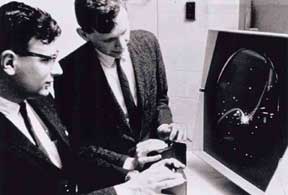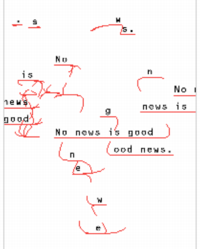Sweating the Small Stuff
Why should we study simple, old computer programs that no one at the time (including the programmers) ever thought would be studied? I didn’t want Andrew’s reply regarding my study of Combat to take over the other discussion Noah began about going beyond procedural literacy – this is a side comment based on a parenthetical question Noah asked about studying source code. But I did think it is worth a response…
I find it charming that Nick (and others?) are studying the assembly code of Combat and other early computer games. I think they’re worthy of study because of their place in history, they have some elegant features, their necessary use of abstraction (as opposed to the ever-increasing realism of today’s games), their extremely constrained operating systems (so little memory, CPU speed, squeezing in computation in between drawing of frames when the raster gun was travelling back to pixel 1, etc.). I find it amusing because I’d bet the mindset of the folks making those games at the time was simply to get a dumb little tank to move around and shoot the other tank.




 Not all
Not all  The latest
The latest  Christiane Paul was
Christiane Paul was